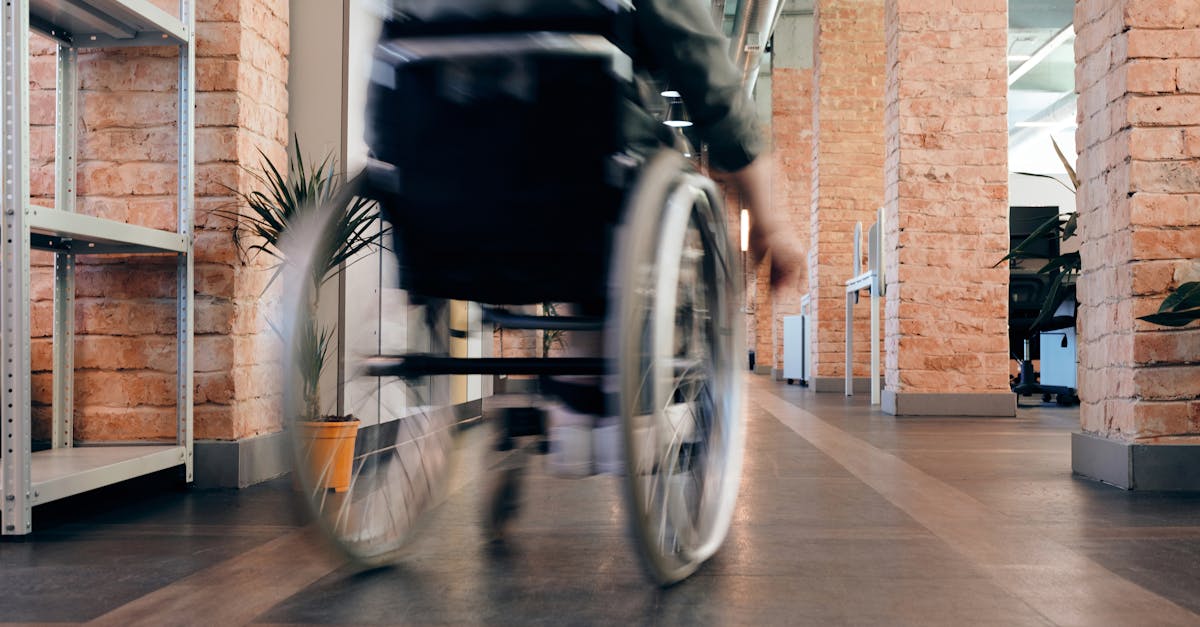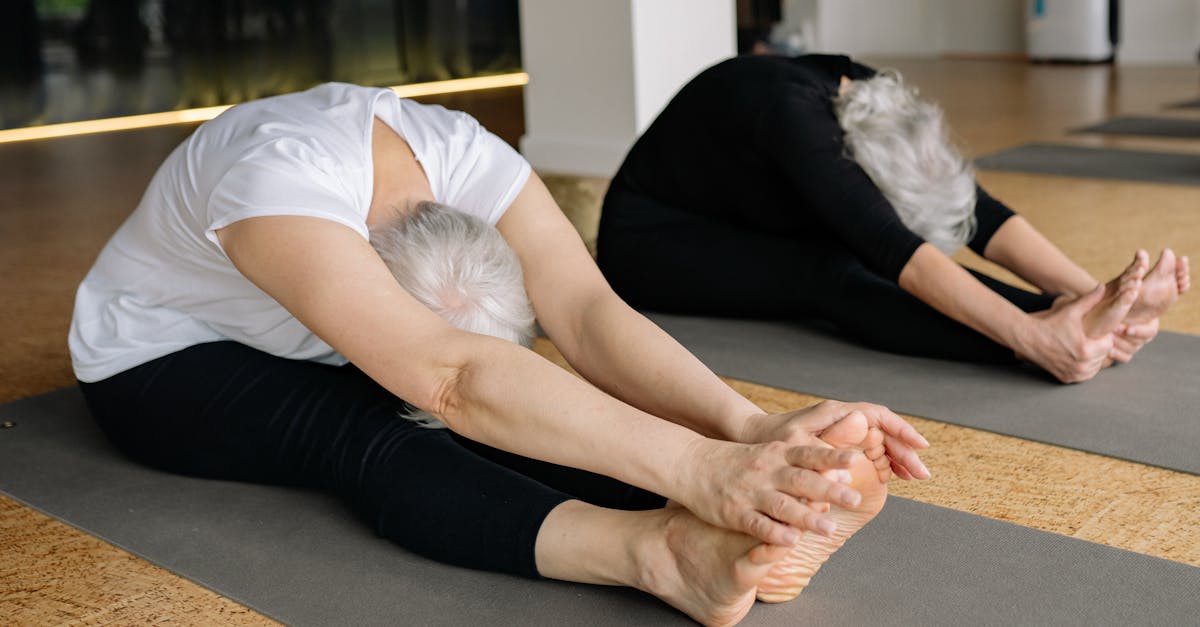Struggling with upper back pain and muscle tension in your upper back? The solution is within reach.
In Short: Upper back pain causing you discomfort? Experience relief and regain your strength with targeted upper back pain exercises focused on improving posture and correcting rounded shoulders. Pulse Align presents a unique and simple approach to enhancing your mobility through effective neuromuscular recalibration, which addresses the root causes of pain between shoulder blades and promotes a healthier thoracic spine. Reclaim your health and wellness at Pulse Align Clinics. BOOK YOUR APPOINTMENT today!
Are you struggling with lower back pain and poor posture?
Finding upper back pain relief is no longer an elusive dream, thanks to Pulse Align’s innovative role in encouraging mobility. With a focus on addressing pain between shoulder blades and combatting rounded shoulders, Pulse Align employs gentle techniques to alleviate dorsal pain and encourages proper posture correction. By incorporating effective upper back pain exercises and addressing underlying issues such as muscle tension in upper back, Pulse Align not only enhances mobility but also promotes lasting relief. Discover the benefits of integrating ergonomics and proper lifting techniques into your daily routine for a healthier spine and improved overall well-being.

Finding ease and comfort in daily activities can sometimes feel like a daunting task, especially when facing discomfort in the upper back. At this intersection of strain and relief, Pulse Align introduces a transformative approach to promoting posture improvement and neuromuscular recalibration. Our gentle techniques foster an environment where natural balance can flourish, allowing clients to reclaim their mobility.
The Gentle Art of Recalibration
The journey to well-being begins with understanding the body’s need for harmony. At Pulse Align, we harness the power of gentle stimulation that emphasizes the recalibration of muscle tone. This approach is not just about alleviating discomfort but is deeply rooted in encouraging a state of balance that optimizes everyday movement. Through our specialized methods, clients can experience enhanced flexibility and a renewed sense of vitality.
Holistic Benefits for Everyone
Our approach to well-being prioritizes the body’s innate ability to heal. By focusing on muscle tone symmetry and improved posture, Pulse Align helps facilitate natural healing processes that resonate throughout the entire musculoskeletal system. Families can embrace this opportunity together, as our services extend to everyone, from children to expecting mothers. Clients often share their positive experiences, highlighting how they feel lighter and more confident in their movements, reinforcing that wellness is a journey best taken together.
Client Experiences
Many clients reflect on their time at Pulse Align, noting how they’ve been able to improve posture naturally and reduce tension in the upper back. One satisfied client remarked, “I feel a renewed sense of mobility and less strain throughout my daily activities.” These testimonials underscore the essence of our philosophy—tapping into the body’s ability to achieve balance without direct treatment of symptoms.
Your Invitation to Wellness
If you’re seeking ways to enhance your well-being and embrace a holistic lifestyle, it’s time to explore what Pulse Align can offer. With clinic locations in Montreal, La Prairie, Terrebonne, Chicoutimi, Charlesbourg, Saint-Jérôme, Châteauguay, Sainte-Marie, Les Escoumins, Granby, and Panama City, we’re here to support your journey. Visit the Pulse Align website to learn more about our services and book a consultation tailored to your unique wellness needs. Remember, our mission is to complement your healthcare experience, guiding you toward a lifestyle where comfort and harmony reign.
- Gentle Neuromuscular Recalibration – A method that aids in correcting posture for enhanced comfort.
- Postural Awareness – Focusing on proper alignment to alleviate strain on the upper back.
- Therapeutic Exercises – Targeted routines designed to relieve tension between the shoulder blades.
- Kinesiology Techniques – Approaches that enhance muscle function and improve recovery.
- Thoracic Spine Stability – Understanding its role in maintaining balance between neck and lower back.
- Emotional Well-Being – Recognizing the connection between emotions and muscle tension.
- Mobility Enhancement – Strategies to boost freedom of movement and reduce stiffness.

Experiencing upper back pain can be a debilitating issue that many face, often resulting from poor posture or lifestyle choices. At Pulse Align, we emphasize the need for a comprehensive approach to upper back pain relief that focuses on neuromuscular health and posture improvement. This article discusses the importance of effective strategies such as targeted exercises, daily adjustments, and a holistic approach to relieving dorsal pain and promoting mobility.
The Importance of Proper Posture
Recognizing the role of rounded shoulders and poor posture is crucial in mitigating upper back pain. When we hunch or lean forward frequently, such as when using electronic devices, it creates muscle tension in the upper back and contributes to pain between shoulder blades. Simple adjustments, like maintaining a neutral spine while sitting and standing, can significantly improve your condition.
Effective Upper Back Pain Exercises
Engaging in upper back pain exercises is vital for recovery. Exercises focused on the thoracic spine can help counteract the negative effects of muscle tension and promote overall spinal health. Activities like trunk exercises aimed at strengthening your back muscles can significantly alleviate discomfort. Incorporating core strengthening workouts can also provide stability and support for your spine.
Integration of Neuromuscular Health
At Pulse Align, we utilize a unique method that concentrates on nervous system recalibration and enhancing natural balance. This state-of-the-art approach ensures that your body not only finds relief from thoracic spine pain but also strengthens the underlying systems that support it. Patients have reported improved mobility and reduced discomfort through this holistic recalibration.
Utilizing Ergonomic Solutions
Using an ergonomic backpack or adjusting your workspace can significantly impact your posture and thus affect your upper back health. Evaluate your daily routines and identify potential triggers of stress and upper back pain. Ensuring proper lifting techniques and maintaining good positioning while seated or on the move prevents strain and injuries.
Why Choose Pulse Align?
Choosing Pulse Align means embracing a compassionate and personalized approach to managing your back pain. Our dedicated team offers consultations to curate individual exercise plans that cater specifically to your needs. Whether you’re in Montreal, Panama City, or La Prairie, our services aim to support you on your journey to wellness.
For those seeking relief from upper back pain, we invite you to explore our tailored techniques and book a consultation. By prioritizing personalized care and integrating effective exercises, you can reclaim your mobility and enhance your quality of life. Don’t let upper back pain hold you back; discover a new path to wellness with Pulse Align today.
| Aspect | Pulse Align’s Contribution |
| Technique | Gentle neuromuscular recalibration for pain relief |
| Posture Correction | Emphasis on correcting poor posture to reduce discomfort |
| Mobility Improvement | Integration of exercises targeting upper back mobility |
| Patient Feedback | Positive experiences reported by multiple patients |
| Core Focus | Addressing rounded shoulders to alleviate tension |
| Kinesiology Therapy | Techniques that enhance muscle function and communication |
| Effective Exercises | Demonstrates routines improving thoracic spine flexibility |
| Emotional Impact | Understanding link between muscle tension and trapped emotions |
| Pain Management | Offers strategies for managing both upper and lower back pain |

Transforming Wellness Journeys: Real Client Experiences with Pulse Align
Many clients have discovered relief from upper back pain by embracing the innovative methods offered by Pulse Align. Their unique approach, which emphasizes the body’s natural ability to recalibrate and restore balance, has profoundly impacted individuals on their paths to holistic recovery. One client from Mont-Royal shared, « I never realized how much my posture was affecting my pain. After just a few sessions at Pulse Align, I felt more mobile and revitalized. » Such transformations are becoming a common theme for those who seek comfort and improved health through their services.
Clients throughout the region, including Terrebonne and Les Escoumins, have expressed how Pulse Align’s methodologies have supported their journey back to wellness. An enthusiastic client from Sainte-Marie remarked, « Pulse Align has not only alleviated my discomfort but also empowered me to understand my body better. It feels like I am learning to embrace movement again. » Personal testimonials like these illustrate how the supportive techniques encourage both healing and self-awareness.
Within Charlesbourg and Deux-Montagnes, residents seeking improved mobility have found value in reaching out to Pulse Align. A client from Châteauguay noted, « The guidance I received helped me reconnect with my body, making enjoyable activities possible again. I feel free! » This renewed sense of freedom and vitality speaks volumes about the effective, client-centered care they provide.
In addition to individual transformations, the community impact has been substantial. Families in Sainte-Marie appreciate how Pulse Align collaborates with local healthcare teams to maximize client support. This integrated approach ensures that everyone involved in their wellness journey is aligned in promoting better health. Even clients from Saint-Jérôme have seen significant improvements naturally after working with the dedicated team.
Clients consistently highlight how Pulse Align nurtures their body’s potential to recover, encouraging a holistic view of health and wellness. Whether seeking pain relief or enhanced mobility, the Pulse Align team stands ready to support everyone from Panama City to Chicoutimi on their personal wellness journeys. Together, they foster a collective effort aimed at restoring balance and promoting optimal body function.
To explore how Pulse Align can support your journey towards wellness and upper back pain relief, visit Our Clinics and discover the unique benefits available near you.
Pain in the upper back can be a daunting experience that overshadows daily life, transforming simple activities into formidable tasks. At Pulse Align, we offer a gentle and comprehensive approach to healing upper back discomfort through our Pulse Align Method. Our method emphasizes neuromuscular recalibration, which not only aims to alleviate pain but also promotes essential posture correction and enhanced mobility.
Through the innovative techniques we provide, individuals can find significant relief from muscle tension caused by poor posture, ensuring a holistic healing process. Our approach focuses on addressing the underlying challenges presented by rounded shoulders and the implications they have on upper back pain, transforming the healing journey into an empowering experience.
Our Mission
At Pulse Align, our mission is to deliver evidence-based, client-centered treatments that address the underlying causes of pain and dysfunction. By integrating advanced techniques and technologies, we strive to empower each person to take control of their health, ensuring a high standard of care, lasting relief, and an improved quality of life.
For those struggling with upper back pain, we introduce an array of effective exercises specifically designed to target discomfort between the shoulder blades. Our programs aim to enhance thoracic mobility, enlightening individuals on the importance of a well-supported spine for overall stability, linking the neck and lower back to create a balanced posture.
Our dedicated team at Pulse Align is passionate about embracing each individual’s journey toward reclaiming their mobility and comfort. Many patients have shared transformative stories about their experiences, highlighting how our methods have positively impacted their daily lives, reduced their pain levels, and enhanced their overall physical function.
In addition to therapeutic sessions, exploring effective physical therapy exercises can aid significantly in managing back pain. Our aim is for every person to step into a space where they feel understood and supported, knowing they are not alone in their battle against discomfort.
By fostering an informed community, we believe that encouragement and empathy can work miracles in rediscovering one’s vitality and well-being. If you are seeking guidance or want to explore our variety of services to improve your health, visit our website.
Unlock Your Potential for Pain Relief with TAGMED’s Spinal Decompression Therapy
TAGMED offers an advanced Spinal Decompression Therapy that serves as a non-surgical solution for individuals experiencing chronic pain, particularly those suffering from herniated discs, bulging discs, and conditions like spinal stenosis and foraminal stenosis. This innovative treatment method is specifically designed to alleviate pressure on the affected areas, enhancing mobility, reducing discomfort, and supporting the body’s natural healing processes. If traditional therapies haven’t provided the necessary relief, explore how TAGMED’s evidence-based approach can assist in reclaiming an active, pain-free lifestyle.
Have you tried conventional treatments and still struggle with persistent back pain due to a severe disc condition?
The key to TAGMED’s success lies in its neurovertebral decompression technique, which applies a controlled, progressive traction force to the spine. This method increases the space between vertebrae, alleviating pressure on both the intervertebral discs and nerve roots. The result is improved fluid circulation in the targeted area, reduction of inflammation, and significant pain relief. This reliable, non-invasive solution is particularly beneficial for those suffering from chronic back pain and related conditions.
Mechanism of Action
Discussing its efficacy, TAGMED’s neurovertebral decompression utilizes a sophisticated approach to gently stretch the spine, allowing for enhanced space and thereby lowering the pressure that often leads to chronic discomfort. The process aids in optimizing fluid movement around the discs, which is crucial for nutrient delivery and toxin removal, ultimately reducing inflammation and pain. This mechanism makes it a safe alternative for individuals seeking relief from chronic back issues.
Specific Benefits
This non-invasive approach is particularly effective in alleviating chronic pain related to herniated discs or spinal stenosis. By reducing nerve pressure and optimizing fluid circulation in the spinal area, TAGMED’s therapy can expedite recovery times and vastly improve the quality of life. Many patients mark a noticeable decrease in discomfort, allowing them to engage in daily activities without the constant burden of pain.
Comparison with Other Treatments
When compared to conventional treatments such as pain medications, corticosteroid injections, or even surgical options, TAGMED’s neurovertebral decompression demonstrates significant advantages. The non-invasive nature of this therapy minimizes risks associated with medication while offering a potentially quicker recovery timeline. This makes it an ideal consideration for individuals seeking safer, evidence-based alternatives to manage their chronic pain.
Case Studies or Testimonials
Numerous patients have shared their positive experiences with TAGMED’s neurovertebral decompression therapy. Testimonials often highlight lasting pain relief, the ability to resume daily activities faster, and a reduced dependency on pharmaceuticals. These real-world accounts provide compelling evidence of the effectiveness and practicality of this treatment method, making it an attractive option for anyone battling chronic pain situations.
If you’re struggling with upper back pain, it’s essential to explore approaches that emphasize holistic health and support your body’s innate ability to heal. At Pulse Align, we focus on neuromuscular recalibration to promote important posture correction that can significantly enhance your well-being. Our gentle methodology not only aids in reducing discomfort but also fosters increased mobility, allowing you to reclaim movement with ease.
Clients have shared their positive experiences with Pulse Align, highlighting the transformation in their daily lives. By embracing our principles, many have discovered a pathway to natural pain relief that aligns with their personal wellness journeys. This comprehensive approach resonates with individuals seeking to achieve lasting results without the invasiveness often associated with traditional options.
We encourage you to take the next step towards enhancing your wellness. Discover the Pulse Align difference today! Book a consultation at one of our clinics and begin your transition to improved health and vitality. Your journey towards a healthier, more balanced you starts now, and we are here to support you every step of the way.

Do you suffer from discomfort that responds little or not at all to conservative methods?
At Pulse Align, we understand that life’s daily activities can be hindered by various sensations of discomfort and imbalance that persist despite traditional approaches. Embracing a non-invasive and innovative method, we focus on supporting the body’s natural ability to recalibrate itself through gentle, imperceptible pulses. This approach nurtures a sense of comfort and well-being while enhancing the body’s posture and alleviating tension in the muscles and joints that often accompany daily challenges.
Rather than addressing discomfort directly, Pulse Align partners with clients to enable their bodies to restore balance naturally. By enhancing muscle tone symmetry, we pave the way for significant improvements in overall comfort. Our clients frequently notice enhancements in their mobility and posture, leading to a more vibrant and fulfilling life without the burdens of persistent discomfort. Our approach encourages the body to communicate its needs, inviting clients to experience a greater sense of well-being and restoration.
What sets Pulse Align apart is our commitment to a personalized experience tailored to each client’s unique journey. Many have shared their inspiring testimonials, highlighting improvements in tension around the neck and back, as well as overall wellness. Clients consistently express gratitude for the care and understanding received during their visits, reporting a newfound sense of comfort and mobility. This evidence of transformation emphasizes the empowering nature of our family-focused services, which cater to clients of all ages, including children and pregnant women.
We invite you to explore all that Pulse Align offers by visiting our website. Discover further details about our services, locate a nearby clinic in cities such as La Prairie, Mont-Royal, and Terrebonne, and book a consultation to begin your journey toward enhanced well-being. Remember, Pulse Align is designed to complement your existing healthcare services, ensuring that you receive comprehensive support while fostering your body’s natural processes. Experience the unique benefits of our approach and join others who are reclaiming their vitality!
To learn more about our services and book an appointment, visit our website: Pulse Align
Frequently Asked Questions
Douleur dorsale
- Peut-on utiliser un rouleau de massage (foam roller) ?Oui, le foam roller peut aider à détendre les muscles et à améliorer la mobilité de la colonne vertébrale.
- Le surmenage professionnel provoque-t-il des douleurs dorsales ?Oui, le surmenage, le manque de pauses, la tension psychologique et une mauvaise ergonomie favorisent les douleurs.
- Qu’est-ce que la douleur dorsale ?C’est une douleur qui se situe dans la région du dos, généralement entre la nuque et les lombaires.
- La douleur dorsale peut-elle irradier vers les bras ?Moins fréquent qu’avec une douleur cervicale, mais une atteinte de la colonne thoracique peut causer des irradiations dans le torse ou les côtes.
- La musculation est-elle utile pour prévenir la douleur dorsale ?Oui, le renforcement des muscles du tronc, du dos et des épaules soutient la colonne vertébrale et prévient les douleurs.
- Comment améliorer sa posture pour réduire la douleur dorsale ?Se tenir droit, aligner les épaules avec les hanches, engager les muscles abdominaux et utiliser un support lombaire au besoin.
- L’hydratation influence-t-elle la douleur dorsale ?Une bonne hydratation est bénéfique pour les disques intervertébraux, mais ce n’est pas un facteur majeur de la douleur dorsale.
- Une mauvaise posture au travail peut-elle causer des douleurs dorsales ?Absolument, rester assis longtemps, penché en avant ou sans soutien dorsal approprié peut provoquer ou aggraver une douleur dorsale.
- Quand consulter un médecin pour une douleur dorsale ?Si la douleur persiste plus de quelques semaines, s’accompagne de fièvre, de perte de poids, de troubles neurologiques ou s’aggrave progressivement.
- Faut-il éviter de porter des charges lourdes ?Il faut apprendre à soulever correctement (dos droit, genoux fléchis) et éviter de porter des charges inadaptées à sa capacité.
Louis Tremblay sait de première main comment la douleur dorsale peut éclipser la vie quotidienne, transformant des tâches simples en défis redoutables. En tant que défenseur de la sensibilisation à la douleur dorsale chez Pulse Align, il est fier de traduire les recherches de pointe en conseils pratiques, offrant des conseils pratiques et une compréhension sincère à ceux qui recherchent un soulagement. Louis est animé par la conviction qu’une communauté informée, renforcée par l’encouragement et l’empathie, peut retrouver du réconfort et retrouver la vitalité. Dans ses écrits, les lecteurs trouvent à la fois des stratégies pratiques et une voix compatissante, qui le dit clairement : personne ne devrait avoir à supporter seul le poids de la douleur dorsale.
Avis de non-responsabilité médicale
Les informations et conseils fournis sur ce site ne remplacent pas les conseils, le diagnostic ou le traitement d’un professionnel de la santé. Veuillez noter que l’auteur de cet article n’est ni médecin ni spécialiste d’une spécialité médicale telle que définie par le Collège des médecins du Québec. La médecine manuelle, la médecine fonctionnelle et la médecine sportive telles que décrites sur ce site excluent tout traitement médical ou diagnostic posé par un médecin ou un spécialiste médical. Consultez toujours votre médecin pour toute question médicale. Pour plus de détails, veuillez lire notre mentions légales complètes.
References
- O’Sullivan, K., O’Sullivan, L., O’Sullivan, P., & Dankaerts, W. (2013). Investigating the effect of real-time spinal postural biofeedback on seated discomfort in people with non-specific chronic low back pain. Ergonomics, 56(8), 1315–1325. https://doi.org/10.1080/00140139.2013.812750
- Kent, P., Laird, R., & Haines, T. (2015). The effect of changing movement and posture using motion-sensor biofeedback, versus guidelines-based care, on the clinical outcomes of people with sub-acute or chronic low back pain-a multicentre, cluster-randomised, placebo-controlled, pilot trial. BMC Musculoskeletal Disorders, 16(1), 131. https://doi.org/10.1186/s12891-015-0591-5
- MacLachlan, L. S., & Rovner, E. S. (2015). New treatments for incontinence. Advances in Chronic Kidney Disease, 22(4), 279–288. https://www.sciencedirect.com/science/article/pii/S1548559515000397
- Nestoriuc, Y., Martin, A., Rief, W., & Andrasik, F. (2008). Biofeedback Treatment for Headache Disorders: A Comprehensive Efficacy Review. Applied Psychophysiology and Biofeedback, 33(3), 125–140. https://doi.org/10.1007/s10484-008-9060-3
- Sohal, V. S. (2022). Transforming Discoveries About Cortical Microcircuits and Gamma Oscillations Into New Treatments for Cognitive Deficits in Schizophrenia. American Journal of Psychiatry, 179(4), 267–276. https://doi.org/10.1176/appi.ajp.20220147
- Sielski, R., Rief, W., & Glombiewski, J. A. (2017). Efficacy of Biofeedback in Chronic back Pain: a Meta-Analysis. International Journal of Behavioral Medicine, 24(1), 25–41. https://doi.org/10.1007/s12529-016-9572-9
- Çelenay, Ş. T., & Kaya, D. Ö. (2015). Spinal postural training: Comparison of the postural and mobility effects of electrotherapy, exercise, biofeedback trainer in addition to postural education in university students. Journal of Back and Musculoskeletal Rehabilitation, 28(1), 135–144. https://content.iospress.com/articles/journal-of-back-and-musculoskeletal-rehabilitation/bmr00501
- Kent, P., Haines, T., O’Sullivan, P., Smith, A., Campbell, A., Schutze, R., Attwell, S., Caneiro, J. P., Laird, R., & O’Sullivan, K. (2023). Cognitive functional therapy with or without movement sensor biofeedback versus usual care for chronic, disabling low back pain (RESTORE): a randomised, controlled, three-arm, parallel group, phase 3, clinical trial. The Lancet, 401(10391), 1866–1877. https://www.thelancet.com/journals/lancet/article/PIIS0140-6736(23)00441-5/abstract
- Kamachi, M., Owlia, M., & Dutta, T. (2021). Evaluating a wearable biofeedback device for reducing end-range sagittal lumbar spine flexion among home caregivers. Applied Ergonomics, 97, 103547. https://www.sciencedirect.com/science/article/pii/S0003687021001940
- Huang, H., Wolf, S. L., & He, J. (2006). Recent developments in biofeedback for neuromotor rehabilitation. Journal of NeuroEngineering and Rehabilitation, 3(1), 11. https://doi.org/10.1186/1743-0003-3-11
- Dell’Osso, L. F. (2002). Development of New Treatments for Congenital Nystagmus. Annals of the New York Academy of Sciences, 956(1), 361–379. https://doi.org/10.1111/j.1749-6632.2002.tb02834.x
- Simons, L. E., & Basch, M. C. (2016). State of The Art in Biobehavioral Approaches to the Management of Chronic Pain in Childhood. Pain Management, 6(1), 49–61. https://doi.org/10.2217/pmt.15.59
- Cho, C.-H., Lee, H.-J., & Kim, Y.-K. (2024). The New Emerging Treatment Choice for Major Depressive Disorders: Digital Therapeutics. In Y.-K. Kim (Ed.), Recent Advances and Challenges in the Treatment of Major Depressive Disorder (Vol. 1456, pp. 307–331). Springer Nature Singapore. https://doi.org/10.1007/978-981-97-4402-2_16
- Eslamian, F., Jahanjoo, F., Dolatkhah, N., Pishgahi, A., & Pirani, A. (2020). Relative effectiveness of electroacupuncture and biofeedback in the treatment of neck and upper back myofascial pain: A randomized clinical trial. Archives of Physical Medicine and Rehabilitation, 101(5), 770–780. https://www.sciencedirect.com/science/article/pii/S0003999320300046
- Google Scholar. (n.d.). Retrieved December 19, 2024, from https://scholar.google.com/
- Caviedes, J. E., Li, B., & Jammula, V. C. (2020). Wearable sensor array design for spine posture monitoring during exercise incorporating biofeedback. IEEE Transactions on Biomedical Engineering, 67(10), 2828–2838. https://ieeexplore.ieee.org/abstract/document/8984346/
- Norris, C. M. (2008). Back stability: integrating science and therapy. Human Kinetics. https://books.google.fr/books?hl=fr&lr=&id=t6C_4xXqYNkC&oi=fnd&pg=PR9&dq=Emerging+therapies+and+biofeedback+interventions+for+spinal+alignment&ots=Km1Psaum2v&sig=g3uwQdKocOneg6nvPdpHaheQ50Y
- Spirito, A., & Kazak, A. E. (2006). Effective and emerging treatments in pediatric psychology. Oxford University Press. https://books.google.fr/books?hl=fr&lr=&id=kl0SDAAAQBAJ&oi=fnd&pg=PR7&dq=Emerging+therapies+and+biofeedback+interventions+for+spinal+alignment&ots=FG64KYJUWg&sig=uXtwLte5z2dvnoyKGNEnHwrOoGo
- Cleland, J., & Preston, J. L. (2020). Biofeedback interventions. https://strathprints.strath.ac.uk/75282/
- Tremback-Ball, A., Gherghel, E., Hegge, A., Kindig, K., Marsico, H., & Scanlon, R. (2018). The effectiveness of biofeedback therapy in managing Bladder Bowel Dysfunction in children: A systematic review. Journal of Pediatric Rehabilitation Medicine, 11(3), 161–173. https://content.iospress.com/articles/journal-of-pediatric-rehabilitation-medicine/prm170527



